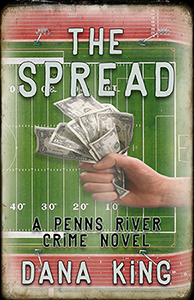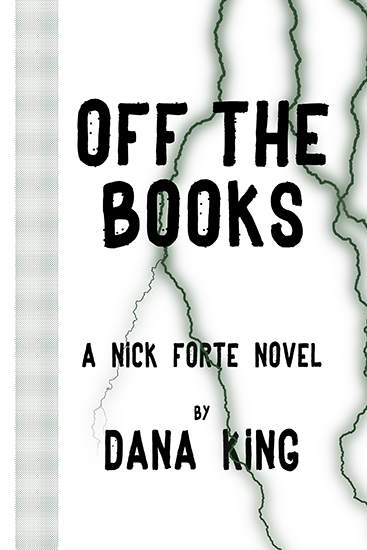New Year’s Eve, everyone makes the obligatory noises about how glad they’ll all be to see the current year end. Declan Burke won’t be among them come December. In May he won the Goldsboro “Last Laugh” Award at the Bristol Crimefest for Absolute Zero Cool. This fall saw the release of Books To Die For, a huge addition to the literature about crime fiction, which he edited with John Connolly. Today he’s agreed to answer some questions about his newest novel, Slaughter’s Hound (for Kindle here) which I reviewed a few days ago.
One Bite at a Time: I finished reading Slaughter’s Hound last week and bits of it keep coming back to me. Not just scenes, but things to think about. What made you decide to bring back Harry Rigby?
Declan Burke: “Well, I’m hoping the bits that keep coming back to you aren’t keeping you awake at night! I guess the honest answer to why I brought Harry Rigby back is that, for me, he’s never gone away. He first appeared in Eightball Boogie, in 2003, and due to his less-than-legal activities in that story, he has spent the last eight years or so incarcerated in a mental institution. I wanted to be true to him, and to reality - if I’d allowed Harry to skip free on what he did in Eightball, it’d all have been a bit of a nonsense. And what he did in that story would have a huge and profound impact on virtually any normal human being, so I wanted him to be a different person, fundamentally changed by his experience, and I wanted to explore how that kind of experience might damage or toughen or change a person. Harry had been prowling around in the back of my mind for a couple of years before I finally let him off the leash and started writing about him again.”
OBAAT: I don’t know your middle name; I wonder if it might be Ray, as Slaughter’s Hound combines many of my favorite things about Raymond Chandler and Ray Banks. Are either of them conscious influences on your writing?
DB: “I love Ray Banks’ books - Ray has that raw quality that appears to be rough ‘n’ ready on the page but is in fact the product of a writer who has fully mastered the craft. I can’t claim him as an influence for the Rigby stories, though, because I’d established that particular voice long before I’d come across Ray’s work. As for Chandler, well, absolutely. I wake up in the night in a cold sweat sometimes, having a nightmare that the Chandler Estate is suing for plagiarism. I wrote Eightball originally as a homage to Raymond Chandler’s books - I loved (and still love, and always will) that combination of tough-guy hardboiled attitude and overly ornate, cynical, wise-cracking prose. I did try to tone down the wisecracks for Slaughter’s Hound, because Harry is a little bit damaged, and not so prone to shoot from the lip, but there’s no doubt he’s very much made in the image of Philip Marlowe, that knight errant who is obsessed with justice, no matter how ridiculous it makes him look or act.”
OBAAT: I don’t know a writer so willing to change direction as you are, nor dexterous enough to pull it off. The Big O resembles Eightball Boogie not at all. Absolute Zero Cool has no comparable book in my experience, and Slaughter’s Hound, while more traditional than AZC, is still a departure in depth and darkness form anything else you’ve written. When coming up with ideas, do you consciously set out to make each book as different from its predecessor as you can, or does it just work out that way?
DB: “I do set out to write something different from the book that has gone before, that’s definitely part of it, although I’m nowhere as calculating and thoughtful about it all as I should be. There’s a few reasons why I write the way I do - one is that, as a reader (and every writer is first and foremost a reader), I have pretty catholic taste; I don’t read the same kind of book twice in a row, I like to mix it up as dramatically as I can. And if that’s what works for me as a reader, it stands to reason that it should work that way as a writer too, even if doing so is a kind of shooting myself in the foot in terms of commercial success. It’s also true that I’m more than happy to follow the logic of a story to its end, even if that’s a bitter or dark end - I’m not saying that I allow the characters to tell me how it works out, or any of that kind of faff, but if you put together a particularly dark set-up, and lead the reader to believe that it’s all going to end pretty cataclysmically, and then pull back from that to provide a palatable, saccharine-sweet ending - well, you’re cheating everyone, aren’t you? Yourself, the reader, the characters, everyone.”
OBAAT: Crime fiction aficionados love to talk about first sentences setting the hook in the reader. You do it beautifully in Slaughter’s Hound, and but in a unique way. Tell me where that sentence came from.
DB: “Well, that’s an odd one to answer, because the first sentence of Slaughter’s Hound was one of the last things I wrote for the book. It’s a long sentence, I think that’s what you’re getting at here, and it just felt right to allow it run on, because as I was writing it, it seemed to encapsulate the mood of the book. It’s also true that I’d read Daniel Woodrell’s Tomato Red not long before, which also opens with a pretty long sentence, and I do love a challenge … But in part, too, it’s a reaction against the conventional wisdom you’re given as a writer, that the start of a novel should be made up of short, declarative sentences, a single-image hook to grab the reader’s attention. I hate most of the advice young crime / mystery writers are given these days, not least because most of it seems to presume that the crime / mystery reader is a drooling idiot who can’t deal with complicated concepts and ideas, or styles - or sentences that are more than eight words long.”
OBAAT: Christa Faust has said—and I’m paraphrasing—the difference between hard-boiled and noir is, in hard-boiled you’re in a fucked landscape, but you’ll be okay. In noir, the landscape is fucked, and so are you. Slaughter’s Hound starts off as a classic hard-boiled story, full of sardonic comments, but morphs into bleak noir so elegantly I didn’t realize what was happening until a key event in the second half, which caught me unawares until I thought about and I realized it had to be that way. Did the tone evolve as you wrote, or was that always part of the plan?
DB: “I’ll have to be honest and say that it ‘evolved’, which is a fancy way of saying that I wrote myself into a certain position and then had to obey the logic of what had put me there. I don’t plot in advance, not to any great degree, partly because I believe that if I don’t know what’s coming next, the reader is unlikely to second-guess what’s going to happen. I knew Slaughter’s Hound would be darker in tone than Eightball Boogie, simply because of what Harry had done in that story, and the impact it had on him, but I didn’t set out to write a hardboiled novel that would morph into noir, or anything like that. I’m a big fan of writing a story to the best of your ability, and then letting other people decide what it is or isn’t, or what you’re trying to do or say. Maybe I should put more thought into all of this sort of thing before I start out, but I’m not sure I’d be all that interested in writing to a formula, even if it’s one that I’d prescribed for myself.”
OBAAT: I understand you’re not allowed to have a cat, but you clearly have a thing for big dogs. Both Anna in The Big O and Crime Always Pays and Bear in Slaughter’s Hound are huge. Is there some hidden significance to you in enormous dogs?
DB: “Ha! This is a very strange aspect of my books, because I’m not actually all that fond of dogs at all - I much prefer cats, possibly because they’re closer in personality to my own, the selfish buggers. And as for the size of the dogs, well, if you’re going to have a dog in a crime / mystery novel, you don’t want to be fucking around pretending that anyone is really interested in reading about a Pekinese or a Chihuahua. No, the dogs in both The Big O and Slaughter’s Hound were employed to represent a particular facet of contemporary society - they’re domesticated, civilised, conditioned to obey orders, but they’re both throwbacks to a pre-civilised society (Anna’s three-quarters wolf, Bear is an árchú, or Slaughter’s Hound, a Wolfhound that used to accompany warriors into battle in Irish mythology, and subsequently in Irish history). In a sense, the dogs are there to mirror their human counterparts - apparently civilised and domesticated, until you push them too far and have your head snapped off.”
OBAAT: I’m almost afraid to ask, as I’ve come to look forward to not knowing what a book of yours will be like until I’m somewhat into it, but what’s next?
DB: “Right now I’m in the process of redrafting a sequel to The Big O, a caper comedy set in the Greek islands - it’s light and humorous in tone, as a reaction to the darkness of both Absolute Zero Cool and Slaughter’s Hound. Once that leaves the desk, I’m planning on writing a story set on Crete, which is a kind of spy story incorporating a war crime, or atrocity, committed on the island during WWII. It’ll be much closer to AZC in tone and form than the Rigby books, or the caper comedies, and I’m hoping it works out.”
OBAAT: Thanks, Dec, for taking the time to chat. I know how busy you are and appreciate you stopping by.
DB: Much obliged, Dana, as always. Really appreciate it.
Note: My review of Books To Die For and another chat with Dec on that topic can be found at the New Mystery Reader web site.

